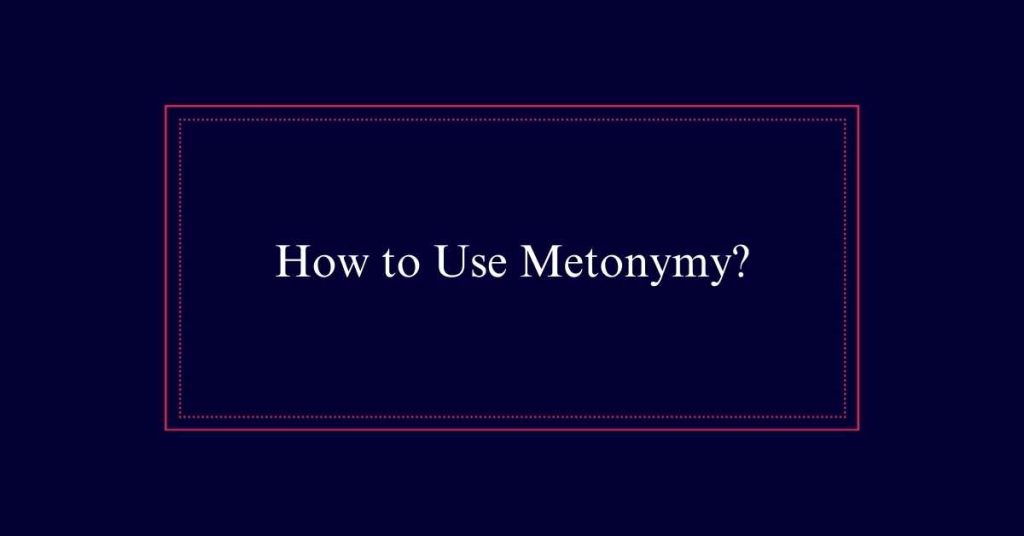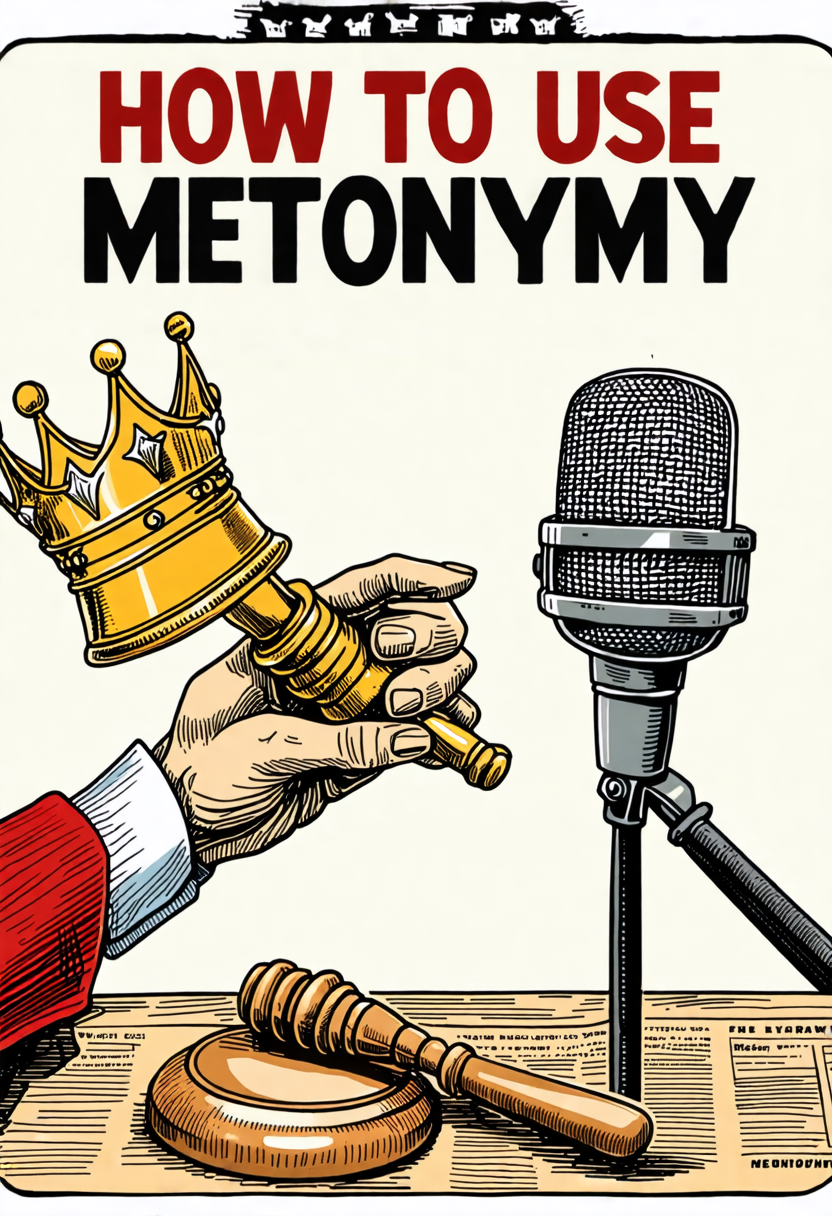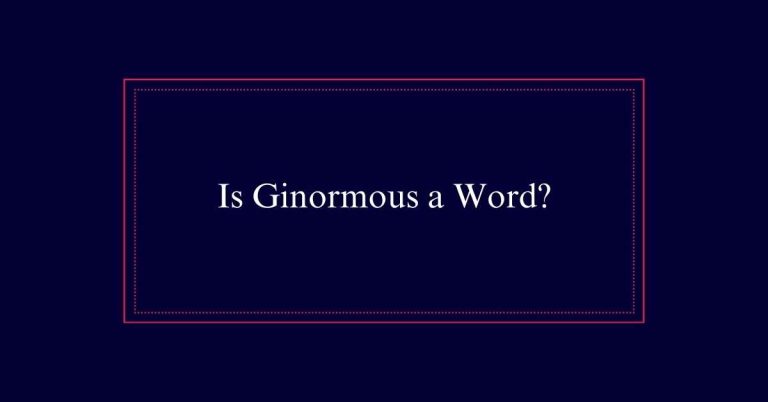How to Use Metonymy?
Metonymy is a literary device where a related term stands in for another term or idea. For example, using ‘the White House’ to mean the U.S. President’s administration. It creates vivid imagery and compresses complex ideas into concise expressions. To guarantee the effectiveness of metonymy, choose terms with a strong association to the concept you want to convey.
What Is Metonymy?
Metonymy is a figure of speech that replaces one word with another that is closely associated with it. This literary device leverages the relationship between two concepts to convey meaning more effectively.
For instance, ‘Wall Street’ represents the financial sector, and ‘Silicon Valley’ refers to the technology industry. Writers use metonymy to create vivid imagery and to compress complex ideas into a single, powerful word. By substituting a related term, they can evoke deeper meanings and emotions.
For example, using ‘the crown’ to signify royalty brings to mind the entire institution of monarchy. Metonymy also helps in making writing more concise by relying on the reader’s understanding of the associations between words.
Pronunciation Guide
Pronounced as meh-TAH-nuh-mee, this term is used to describe a figure of speech involving the substitution of one word for another closely related term. Understanding how to pronounce metonymy correctly guarantees you can discuss this literary device confidently.
Breaking it down: ‘meh’ as in ‘met,’ ‘TAH’ with emphasis, and ‘nuh-mee’ smoothly following. Proper pronunciation makes your literary discussions more professional.
When you encounter this term in texts or discussions, saying it correctly demonstrates your grasp of literary terminology. Remember, metonymy isn’t just about word substitution; it’s about the power of association.
Common Examples
Having understood the pronunciation, let’s explore some common examples of metonymy that illustrate its usage in everyday language and literature.
Metonymy often substitutes a word with something closely related to it, creating vivid and powerful expressions. Here are four common examples:
- Dish – Refers to a plate of food. Instead of saying ‘a plate of food,’ one might say, ‘a delicious dish.’
- Hand – Signifies assistance or help. For instance, ‘Can you lend me a hand?’ implies providing help.
- Wall Street – Represents the financial sector. Wall Street is in turmoil’ means the finance industry is facing issues.
- Silicon Valley – Denotes the technology industry. ‘Silicon Valley is innovating’ refers to advancements in tech.
Why Writers Use It
Therefore, metonymy is an essential tool for effective and evocative storytelling. Metonymy enhances their writing by creating vivid imagery and making their words more powerful.
This literary device allows authors to convey complex ideas or emotions in a concise manner. By substituting a word with another closely associated term, writers can evoke stronger reactions and deeper connections in readers. For instance, using ‘Wall Street’ to refer to the financial industry instantly brings broader economic connotations.

Metonymy also helps writers to avoid lengthy explanations, relying instead on the reader’s familiarity with the substituted term. This efficiency not only sharpens the text but also engages the reader’s imagination, making the writing more impactful.
Creating Vivid Imagery
Metonymy creates vivid imagery by substituting a word with another that is closely associated, sparking the reader’s imagination. This technique enriches descriptions, making writing more engaging.
Here are four examples to illustrate:
- Dish: Using ‘dish’ instead of ‘a plate of food’ evokes a more specific image of a meal.
- Suits: Referring to businesspeople as ‘suits’ brings to mind the corporate world and professionalism.
- The crown: Saying ‘the crown’ instead of ‘the king’ highlights the concept of royalty and authority.
- Wall Street: Mentioning ‘Wall Street’ instead of ‘finance sector’ conjures images of bustling financial activity.
Adding Depth to Writing
By employing metonymy, writers can infuse their work with deeper meaning and richer context. This literary device allows a simple word to represent a more complex idea, adding layers of interpretation. For example, using “the crown” to signify royal authority evokes the entire institution of monarchy.
Below is a table illustrating how metonymy adds depth:
| Metonymy Example | Simple Word | Deeper Meaning |
|---|---|---|
| The crown | King/Queen | Monarchy |
| The White House | President | U.S. Government |
| Hollywood | Movie Industry | Entertainment |
| The pen | Writing | Intellectual Power |
| The altar | Marriage | Religious Commitment |
Making Language Concise
Utilizing metonymy can greatly streamline language, making complex ideas more accessible and succinct. By substituting a single word for a more elaborate concept, writers can convey meaning efficiently.
Here are four ways metonymy aids in making language concise:
- Simplifies Communication: Instead of lengthy descriptions, one word captures the essence (e.g., ‘Hollywood’ for the film industry).
- Reduces Redundancy: Metonymy eliminates repetitive explanations (e.g., ‘The White House’ for the U.S. President’s administration).
- Enhances Clarity: Short, familiar terms replace detailed phrases, making text easier to understand (e.g., ‘The pen’ for writing or journalists).
- Saves Space: Condensed language is especially useful in poetry and headlines where brevity is key (e.g., ‘The crown’ for monarchy).
Metonymy Vs. Synecdoche
Many often confuse metonymy with synecdoche, yet they serve distinct functions in language.
Metonymy involves substituting a word with another closely related term. For example, using ‘Hollywood’ to represent the American film industry.
Synecdoche, on the other hand, involves using a part to represent the whole or vice versa. An example is using ‘wheels’ to refer to a car.
While both involve substitution, metonymy emphasizes the relationship between concepts, whereas synecdoche focuses on parts and wholes.
Understanding these differences helps in crafting precise and vivid imagery. Writers often use both devices to enrich their language, but knowing when to use each can greatly enhance clarity and impact in communication.
Metonymy Vs. Metaphor
Often, metonymy and metaphor are confused, yet they serve distinct purposes in language. Metonymy substitutes a word with something closely related, while metaphor compares unrelated objects to highlight similarities. Here’s a clear distinction between the two:
- Reference: Metonymy has a direct link to its substitute (e.g., ‘The White House’ for the U.S. government). Metaphor creates imaginative connections (e.g., ‘Time is a thief’).
- Imagery: Metonymy evokes imagery through associated concepts. Metaphor uses vivid, often surprising comparisons.
- Clarity: Metonymy offers clear references, making it straightforward. Metaphor can be more abstract and open to interpretation.
- Usage: Metonymy is often used for brevity and precision. Metaphor enriches language with creativity and depth.
Examples in Literature
In literature, metonymy is frequently employed to create vivid associations and convey deeper meanings with few words. William Shakespeare uses it in ‘Julius Caesar’ with ‘lend me your ears,’ asking for attention rather than literal ears.
In Joseph Conrad’s ‘Heart of Darkness,’ ‘the crown’ represents the British monarchy and imperial power. Another example is from F. Scott Fitzgerald’s ‘The Great Gatsby,’ where ‘the green light‘ symbolizes Gatsby’s unattainable dreams and hopes.
Metonymy helps authors evoke powerful imagery and emotions. It makes writing more impactful by linking simple terms with broader ideas. By using metonymy, writers can succinctly express complex themes and create resonant, memorable work.







